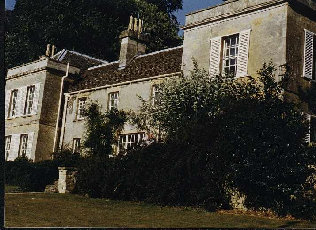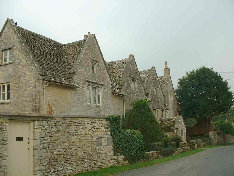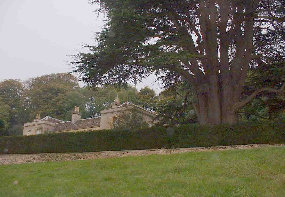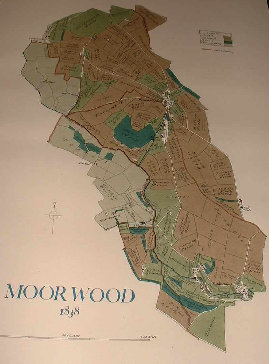There is more than one place known as Woodmancote in England. The one of interest here is adjacent to North Cerney. The name means as it sounds, A woodman’s cottage.
The hamlet of Woodmancote is on the high ground, technically in North Cerney parish, but also nearly in both Bagendon and the ancient Eycot parish. Likely Woodmancote was in existence when the Manor of Eycot existed. Somewhere in this vicinity there was a chapel for Eycot. When it was dismantled possibly, at the time of construction of North Cerney artifacts from it, particularly the monument cross were taken to North Cerney. (According to David Verey expert on Cotswold churches).
Being as it is, located across two parish boundaries, the north end of the parish of Bagendon at Woodmancote is known as the Moor
and sometimes as one of the two or three manor houses at Woodmancote. From Rees’ work in the “history of Bagendon” we get most of
our information on this residence. The other Woodmancote being more a part of the village no doubt has a great history but it is not
well known to this writer.
The fact that Eycott’s are members for some centuries of both North Cerney and Bagendon churches leads to the conclusion that likely they lived around Woodmancote for some time. Cerney House according to what is known was not one of their habitations. Moor Wood was.
Woodmancote clearly existed as a place in the 1200's. When Ela Countess of Salisbury decided to use her assets to found the Abbey of Laycock about 1236 she was able to influence Constance de Legh, a member of the De La Mare family of Leigh and Woodmancote to make a contribution of her estates to the new Abbey. Ela assumed the title of Abbess and devoted her life to the project. In 1306 Richard de Woodmancote was noted as paying his taxes to the Abbey, and around the same time the representatives of the abbey attended the frankpledge court held at Rendcomb representing Woodmancote.
There were 7 taxpayers and a chapel in 1377. Over the years the parcels of land included with Woodmancote seems to have varied. In addition to Laycock Abbey, the abbey at Tewksbury held property there. Later the Earl of Stafford owned a lot of the land and in 1608 the widow Mary, Lady Stafford was noted as the Lady of Woodmancote.
In 1527 Edmund Thame, stewart of Hatherop, gained land at Woodmancote from Laycock Abbey.
A few years later confronted with the dissolution, Giles Poles “The King’s Servant” received a grant in fee of the reversion of this land at Woodmancote leased by the covenant of Edmund Thame. The Guises included about 500 acres at Woodmancote in their Rendcomb Park project in 1837. Another part of the lands were held on lease by Thomas Rich and his descendants in the 15 and 16 hundreds. Most of the large landowners were only interested in using the land for sheep grazing.
In 1710 there were recorded 13 houses at the hamlet. The chapel had vanished by 1600.
Among the residents were the Broad family. In 1576 William Broad became rector of Rendcomb and his sons and descendants held that job for 6 generations. Samuel Broad had served in the Royalist army in the civil war and had his post taken from him in 1649. Then he used his influence to depose the Cromwell appointed rector of Bagendon in 1658. Shortly after that he was again Rector of Rendcomb with the return of the monarchy. Clearly there were divisions in the community.
About 400 to 500 years ago someone brought to Moor Wood a Lebanese Cedar, possibly one of the first in England. This tree stands beside the house today.
At one time Woodmancote had a more important position in the world. Before the turnpike from Cheltenham to Cirencester was built in 1825 the traffic avoided the river valley an the marshy places. This meant that Woodmancote was on the main trail. This also explains why very few Eycotts had connections with Rendcomb. Rendcomb was isolated across the valley. The only road west from Rendcomb was down a steep hill and then one had to cross the river and marsh. Presumably if one wanted to go to Cirencester it was necessary to go by the difficult way of Woodmancote or go east to a longer way, the White way.
Much of the information about Woodmancote comes from Victoria County Series, History of Gloucestershire, Vol 7, 1981 Unfortunately there are almost no references to Eycott’s in that information. Their land leases were not included.













